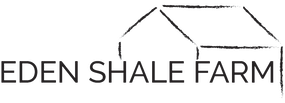|
The Large Bale Feeder (LBF) is quickly becoming my favorite winter feeding structure on the farm. If you are not familiar with this structure, check out the video of the structure when it was first built. In the video Dr. Higgins discusses the design elements and the how the structure functions. Please note that this video was shot during the testing phase so the barn is not filled with hay to its full capacity. Also note, the hay in the video is wet wrapped sudan grass, not poor quality hay that has been stored outside. As the video pointed out, the overall design of this structure is not complicated. Simplicity is what makes it efficient. Upon completion of the testing phase it became clear that the LBF design worked, but there was also a need for a roof over the structure. This structure has a capacity of 32 roll bales, and the roof allows the quality of the hay to be maintained. This post from October 2020 shows the hoop structure completed and the feeder filled to capacity. I would like to thank Billy Ginn for installing our BRITESPAN Hoop Structure over the Large Bale Feeder. Mr. Ginn and his crew did a fantastic job and I would recommend them if you are in the market for a hoop barn. Throughout the summer and fall season, the LBF serves as a storage location for 32 round bales. This hay is alfalfa/orchard grass mix and the strings have been removed. This location is where our mature cows will start eating hay once our stockpiled fescue runs out. This year, we put 30 cows at this structure and started feeding hay on January 15th. The cows have free choice access to this hay and they cycled through allowing everyone to get a chance to eat. We have witnessed 10 cows lined up eating at this structure at one time. Dr. Higgins’ rule of thumb is that 1/3 of the herd should be able to access the feeder at any given time. Therefore, this feeder will accommodate 30 mature cows. As you can see, the structure is designed so that the cows can get all four feet up on concrete even when the feeder is completely full. The feeding rack is designed so that the cows must put their head completely into the feeder to access the hay. This keeps them in the feeder while they eat and any hay that is dropped lands inside of the feeder and not on the concrete where they are standing. This design element minimizes the amount of hay waste due to trampling. The feed rack rides 6 inches above the concrete floor. This causes the cattle to have to clean all the hay up before the rack will advance. This also means that you have to feed good hay for this design to work. If the hay has mold, was stored outside, or has a large amount of debris in it, the cows will not clean it up and the feed rack will get stuck. If you do not utilize good hay, you better own a pitch fork! As you can see in the photo above, there is minimal hay waste on the concrete. In the next photo you can see the approach coming into the LBF. This area has been improved using geotextile fabric and 8 inches of dense grade aggregate (DGA) in effort to keep the animals from creating an area of deep mud. The following photos were taken approximately two weeks since the cattle had started eating at the feeder. You can see that the feeder has advanced and there is starting to become some manure/slop buildup at the entrance. Inside of the hay feeder is acting like feed trough in that, it catches the hay that drops as animals are eating and the next cow up eats the loose hay laying in the bottom of the feeder. After three weeks you can see that the rack continues to advance and the concrete is staying clean and free of wasted hay as it moves forward. The mud/manure buildup is also advancing into the barn at the same rate, but as you can see at the yellow cow, it is only getting about hoof deep. One of the concerns was that cattle would loaf in the barn causing a buildup of mud/manure to form. We did notice a small amount of loafing, especially during rain and wind events. But except during the storm events, the cattle left the structure and went outside after feeding. The location of our water tank is more than 150 feet away from the feeder. This causes the cows to leave the barn to travel to water after eating, then they loaf in the pasture before returning to the feeder to eat. On day 35 the cattle are nearing completion of the 32 bales in this structure. The feed rack has continued to move along exactly like it was designed to do, while being extremely efficient at minimizing hay waste. The progress of the feed rack and the creation of mud/manure behind it have been directly correlated and they have both progressed forward at a constant rate. As the pictures show, the manure never got more than hoof deep anywhere in the barn or at the entrance. The barn floor continues to be virtually free of wasted hay at the feed rack. Another design element is that this structure is oriented in a north/south direction. As you can see in this picture, the cattle entrance is facing south which allows the winter sun to shine far into the building keeping it dryer, as well as keeping any snow/ice buildup thawed out. The cows used this feeder for a total of 40 days and they ate all of the 32 bales. Once the feeder was empty we moved the cows to the calving facility. Had we needed to, we could have rolled the feed rack back to the original position and filled the barn back up with another 32 round bales without ever having to go through a gate with the tractor. After 40 days there was only minimal amounts of manure created. If I had needed to refill the barn with hay I would have scraped the barn clean so that the new bales would be placed on clean concrete. If I were to feed hay in this location all winter long, I would need a manure stack pad to store the manure in. Overall this Large Bale Feeder worked very well and severed multiple functions. It successfully stored 32 round bales for 6 months prior to feeding. It self fed the cows, which did not require the use of the tractor for 40 days during Jan/Feb. It allowed for maximum utilization of the hay, as the amount of waste was almost nonexistent. And it minimized the amount of mud/manure the cows had to navigate during the wettest and most challenging time of the year in Kentucky. I am very impressed with this feeding structure and I would recommend that producers consider it as an option for winter feeding. If you are interested, the plans for the Large Bale Feeder can be found under the Producer Resources tab of our website.
Mike Mccreary
3/9/2021 11:55:18 am
I also like my feeder. One comment/question is that I notice the fines,(small tidbits) accumulate in the open area in the bottom frame thus clogging the movement. The cows then push forward to eat the fresh hay just out of reach causing strain on the complete unit. My thoughts are to add sheet metal to the lower unit in a slanted down fashion to force these crumbles to the front. I also had to reduce the spacing in the head bars to 16" and slant them in order to prevent them from putting one foot inside the unit in order to get fresher hay.
Kerry Mayes
3/9/2021 10:03:41 pm
Would it work to raise the panel and put down a layer of woodchips or other bedding material in order to capture and hold more of the nutrients? 4/13/2021 11:17:14 am
interested to get more information on this automatic large bale feeder. interested in building these Comments are closed.
|
Archives
June 2024
Categories
All
Welcome |
CONTACT US |
EMAIL SIGN UP |
|
Eden Shale Farm
245 Eden Shale Rd. Office: (859) 278-0899 Owenton, KY 40359 Fax: (859) 260-2060 © 2021 Kentucky Beef Network, LLC.. All rights reserved.
|
Receive our blog updates
|

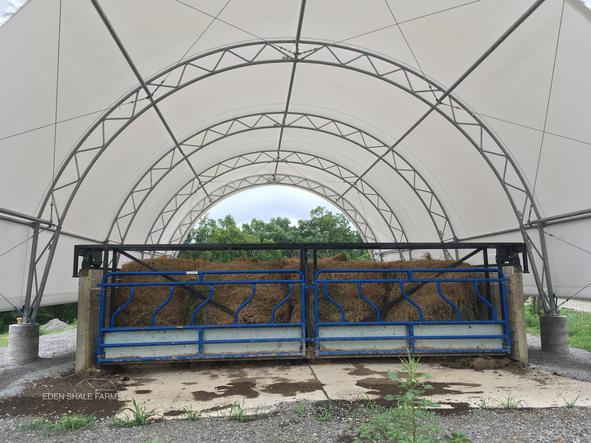
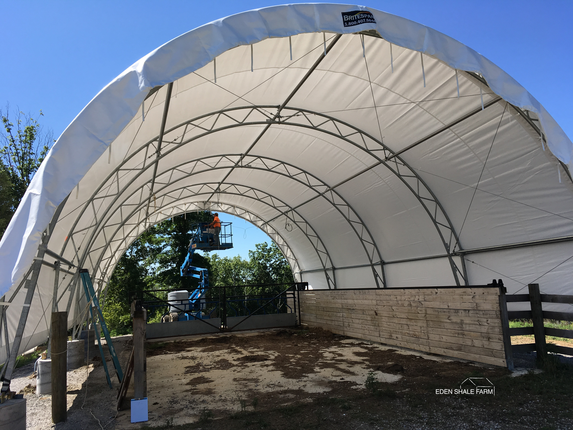
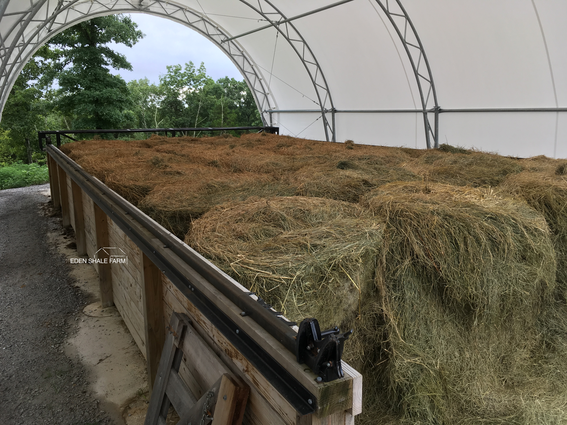
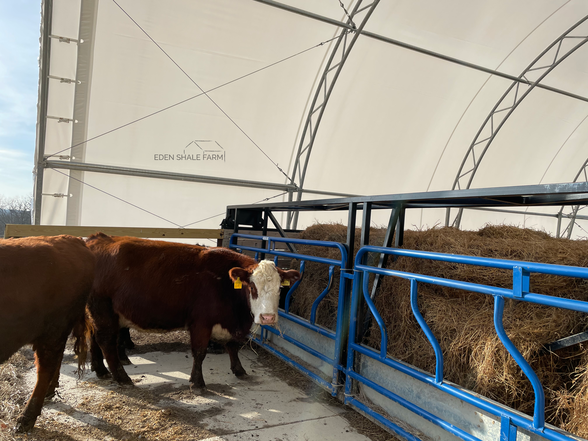
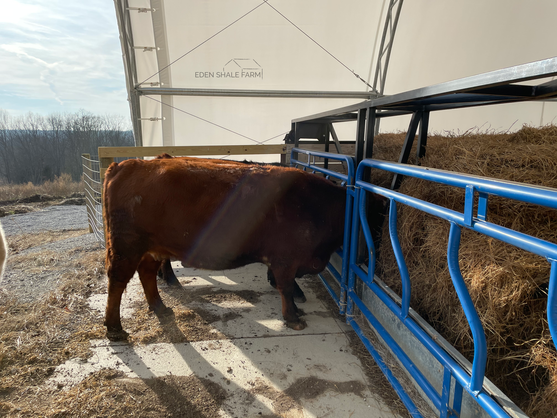
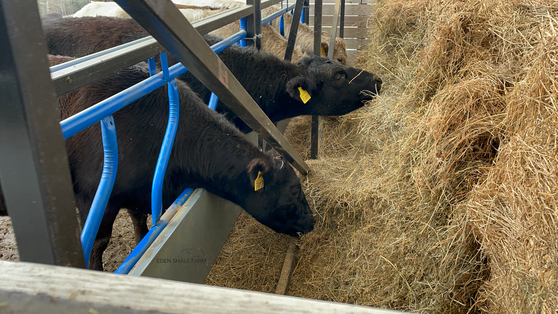
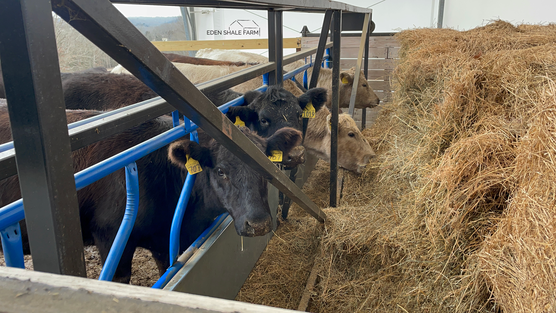
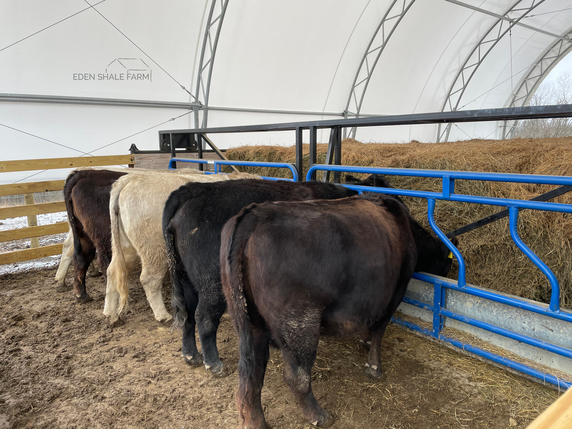
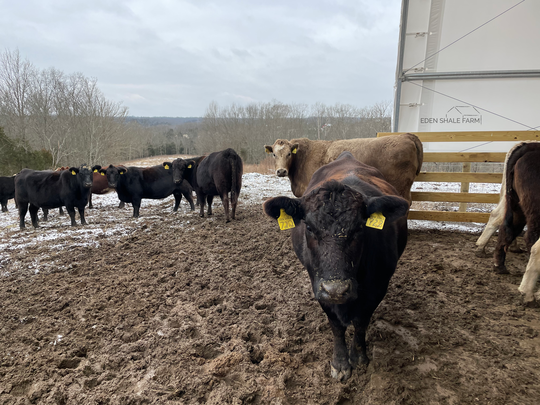
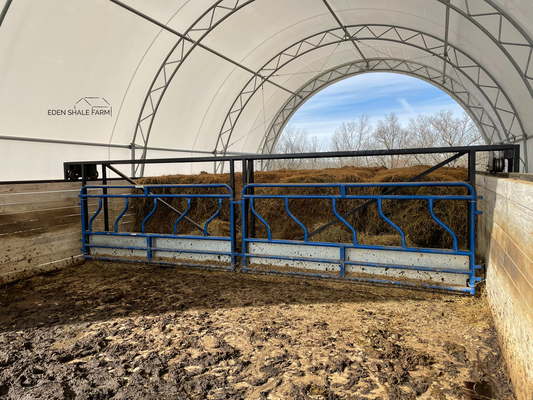
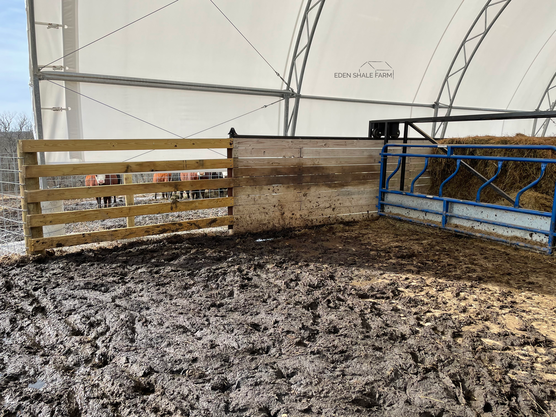
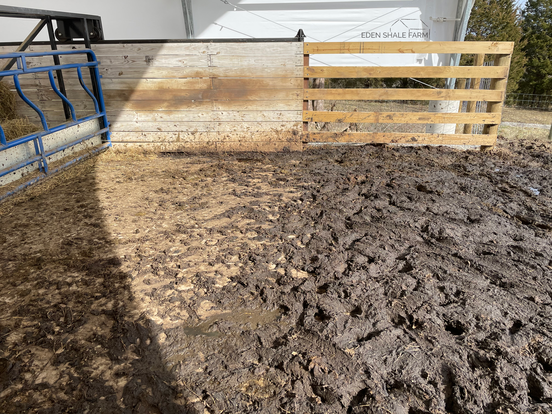
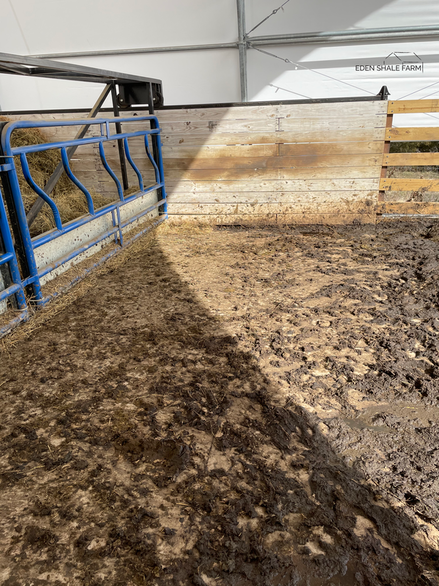
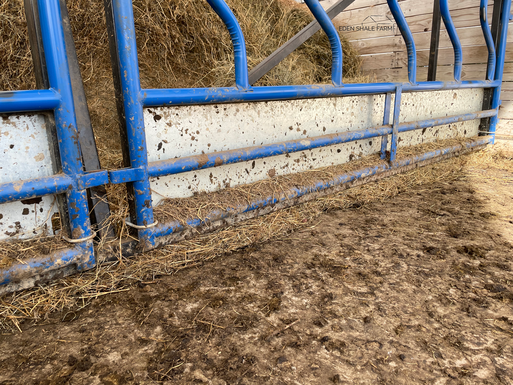
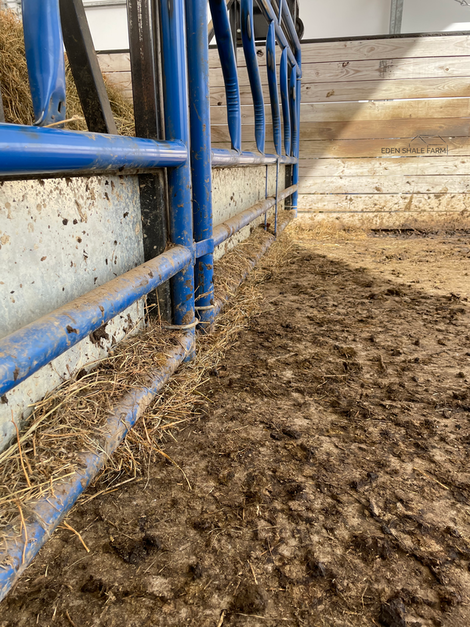
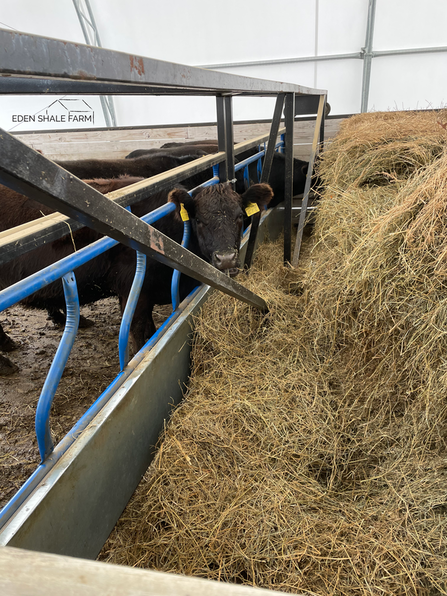
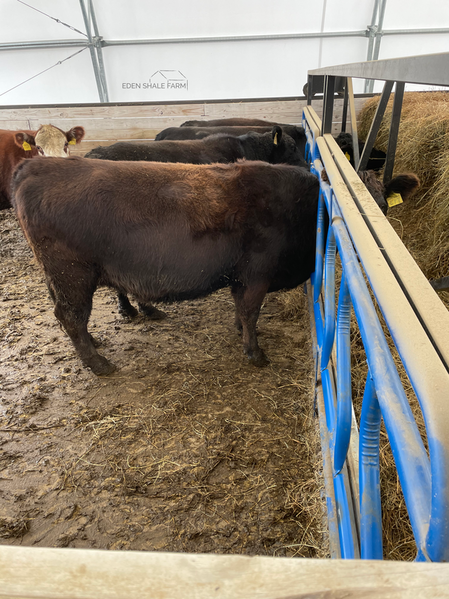
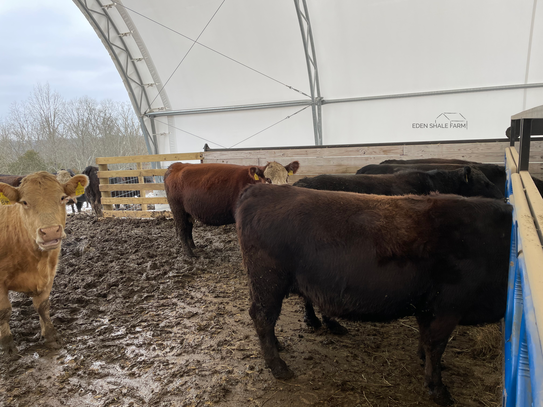
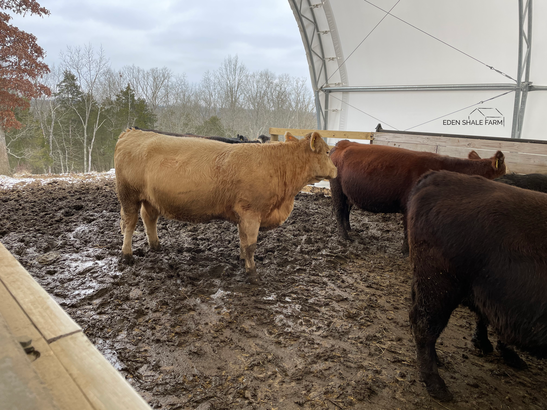
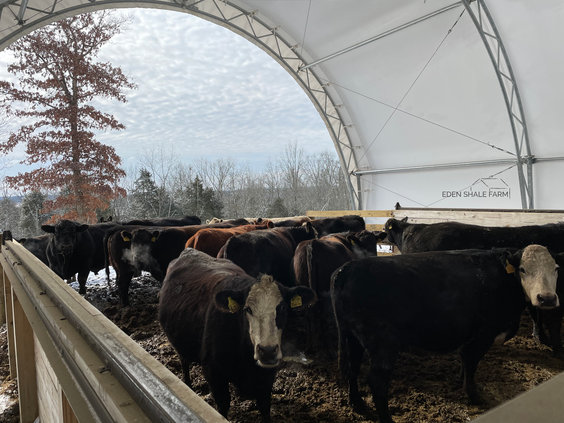
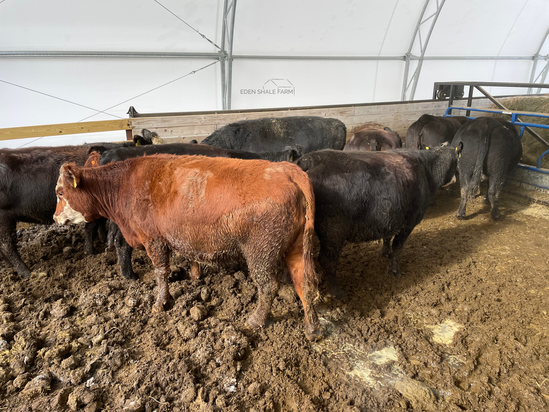
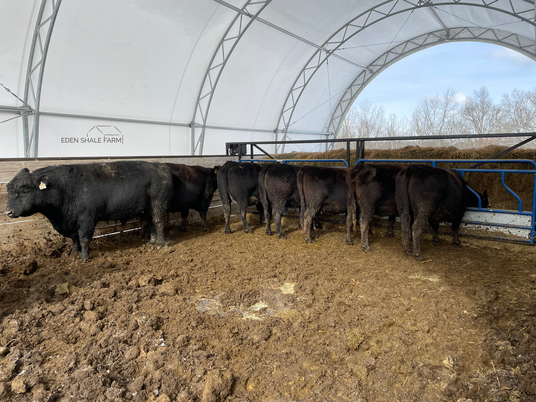
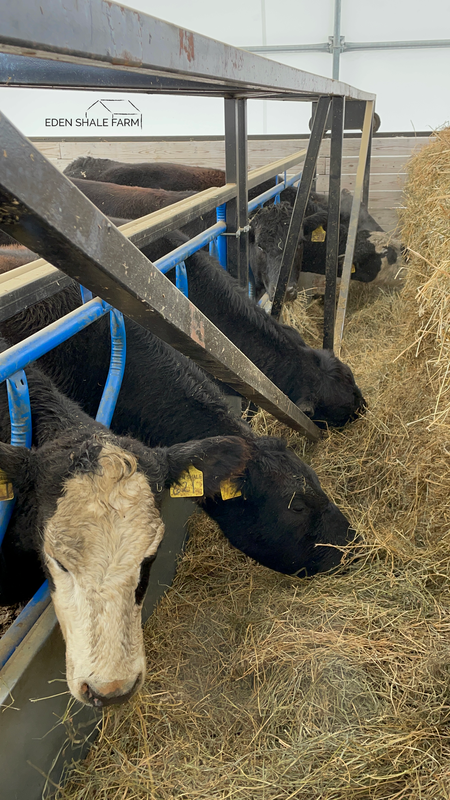
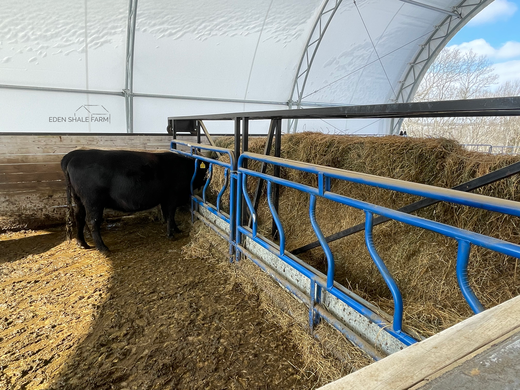
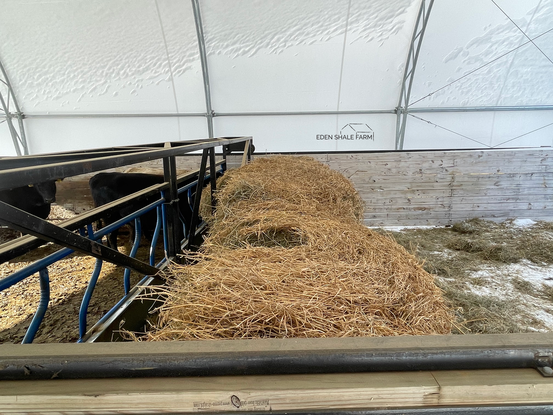
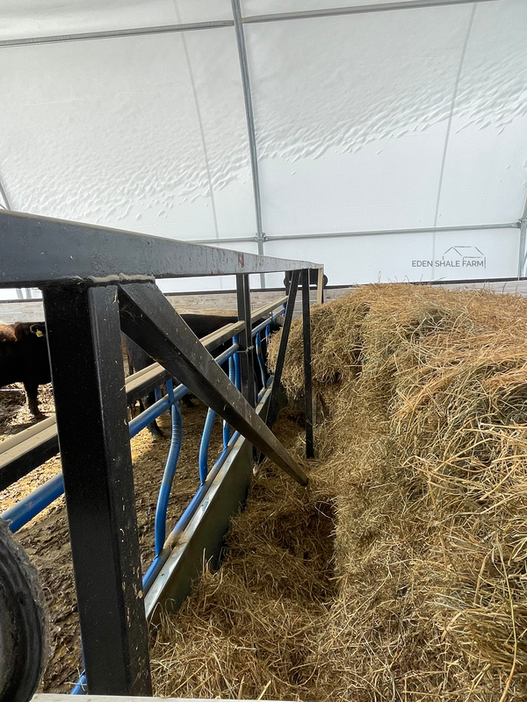
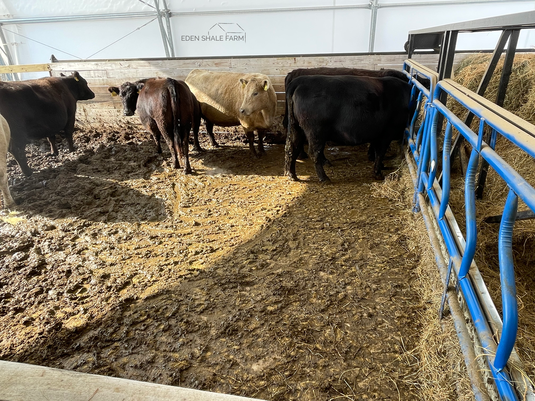
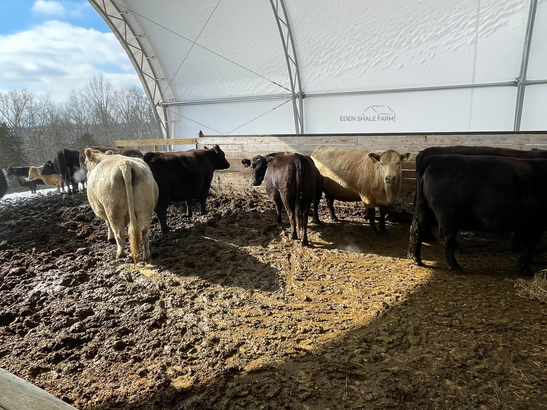
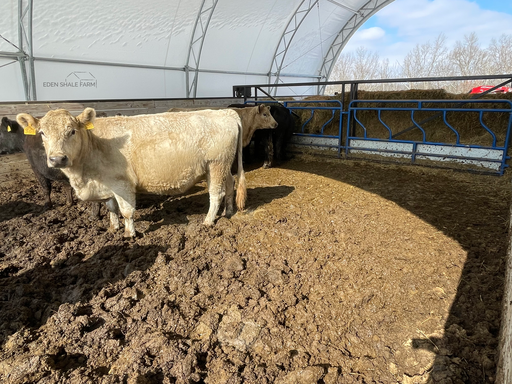
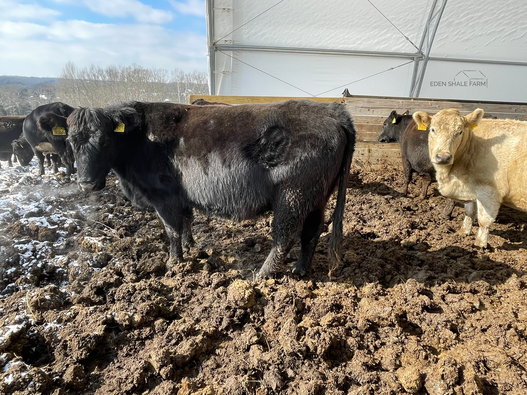
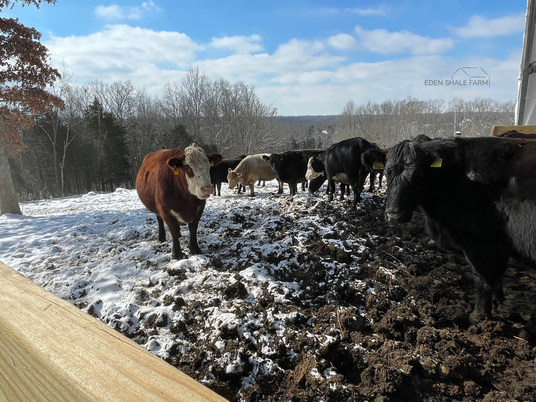
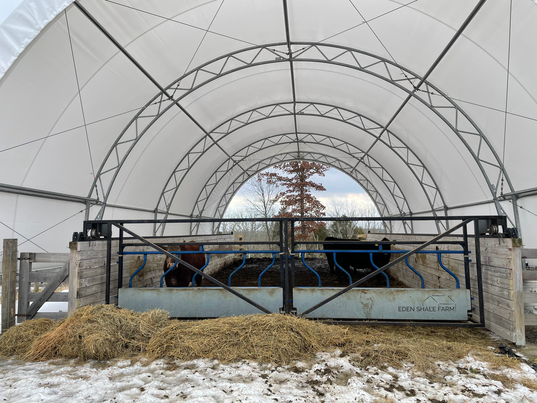
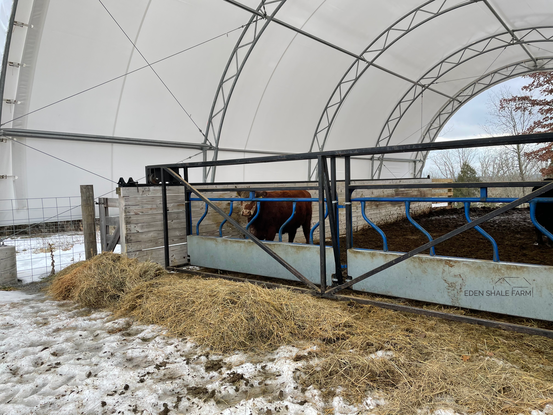
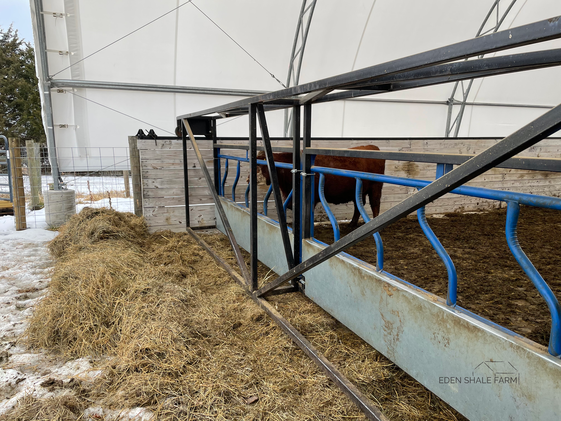
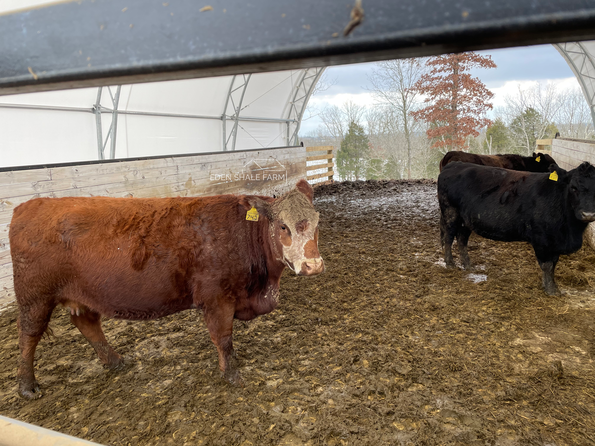
 RSS Feed
RSS Feed
